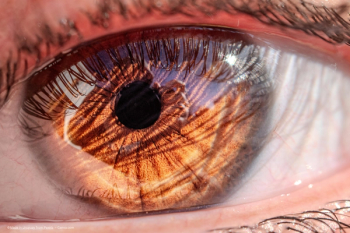
Drainage devices debate
Should glaucoma drainage devices still be viewed as the last resort? asks Professor Walter Konen.
Key Points
Drainage devices like the Baerveldt glaucoma implant (AMO) are increasingly commonly used as a first-line surgical option in treating those glaucoma patients who, for one reason or another, are less than perfect candidates for medical therapy.
What did the tube vs. trabeculectomy study tell us?
The pressure-lowering effect was similar in both groups, with an average IOP of 12.4 mmHg in the tube group and 12.7 mmHg in the trabeculectomy group. The number of glaucoma medications required was higher in the tube group with 1.3 versus an average of 0.5 in the trabeculectomy group.
A major difference, however, was the likelihood of failure, which is obviously not the least important consideration in any field of medicine. For patients who underwent trabeculectomy, there was a cumulative probability of failure within the first year of 13.5%. For those who had a Baerveldt implant that probability was just 3.5%! The authors conclude that, while there is a similar IOP reduction, valve surgery is more likely to maintain IOP control and avoid persistent hypotony and the necessity of re-operation than trabeculectomy.
While the TVT study does not demonstrate a clear superiority of one glaucoma operation over the other, the study group acknowledges the potential for a paradigm shift in glaucoma surgery: "Traditionally, these devices [like the Baerveldt implant] have been reserved for refractory glaucoma in individuals at high risk for failure with standard filtering surgery. The results of the TVT study perhaps suggest that consideration should be given to expanding the role of tube shunts in the surgical management of glaucoma."
Spotlight on the Baerveldt glaucoma implant
The Baerveldt glaucoma implant has a unique design that combines a large surface area in a streamlined device, which can be implanted in a single quadrant. It has proven to be more effective than smaller plates with an increased capacity to drain aqueous and relieve pressure. Compared with multi-quadrant implants it may provide an easier implantation and less trauma to periocular pressure. While the Baerveldt implant is the only device designed for an ideal pars plana placement, it can also be placed in the posterior chamber sulcus and a successful series of such placements has now been reported by ophthalmic surgeons from the New York Eye and Ear Infirmary in the US.
Complicated cases can also benefit
Such an approach can be beneficial when there is the need to maximize the distance between an implant and the highly sensitive corneal endothelium. In a recently published case series,2 eight patients who were either pseudophakic or who underwent cataract surgery concurrent with Baerveldt device implantation, were followed over a period of 18 months. Not only were these patients aged 76 years on average, they were also carrying the potential for postoperative complications: two had exfoliative glaucoma, one neovascular glaucoma (which can be a nightmare for an ophthalmic surgeon) and one had developed glaucoma following a keratoplasty (three patients in total had a history of keratoplasty). Only in two cases was the tube implantation the first-line surgical approach to glaucoma; the others had undergone trabeculectomy and/or laser trabeculoplasty previously.
Newsletter
Get the essential updates shaping the future of pharma manufacturing and compliance—subscribe today to Pharmaceutical Technology and never miss a breakthrough.










































